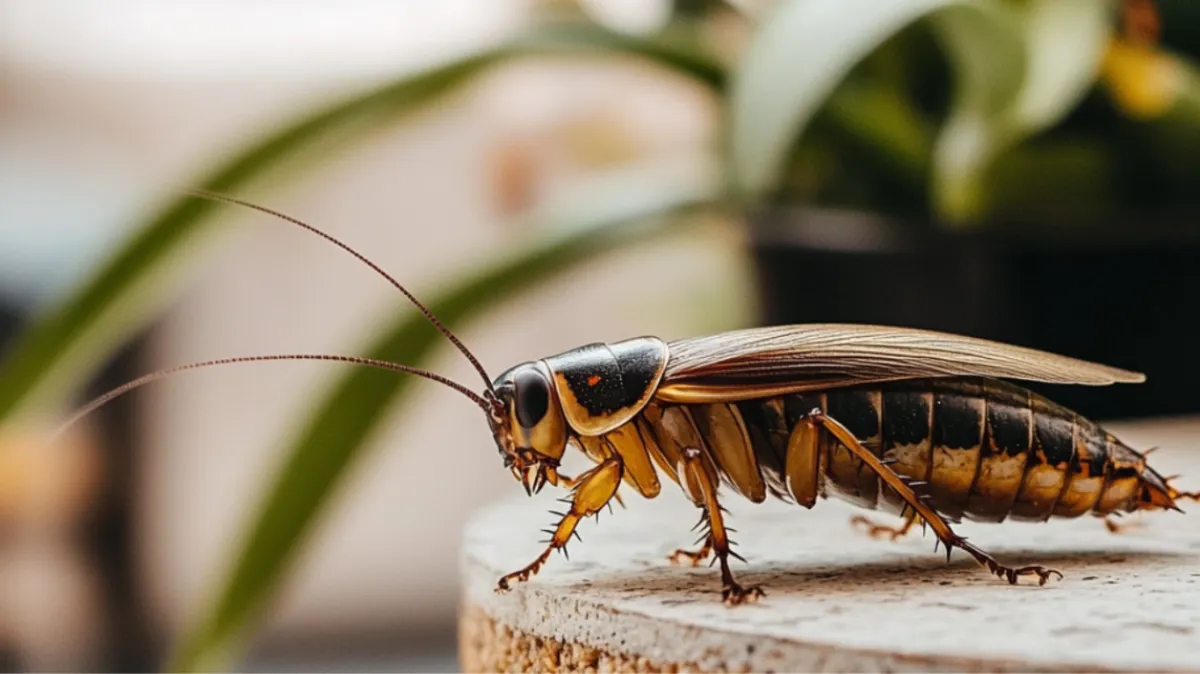
The Rockport Pest Journal
The Rockport Pest Control Journal

April Showers Bring Pest Powers: Tackling Moisture-Related Pests in Rockport, TX
Why Moisture Attracts Pests
Excess moisture creates an ideal environment for pests to thrive, particularly in humid and damp areas where they can find food, shelter, and ideal breeding conditions. Understanding why pests are drawn to moisture is crucial to preventing infestations before they start. Here’s how moisture contributes to pest problems in homes:
1️⃣ Water as a Survival Necessity
Many insects and rodents depend on moisture to stay hydrated, making damp areas like under sinks, near drains, and inside basements a prime attraction.
Standing water in clogged gutters, leaking pipes, or overwatered gardens provides a constant hydration source for pests like cockroaches and mosquitoes.
Even condensation on windows, walls, or poorly ventilated attics can sustain pests looking for a humid environment to settle in.
2️⃣ Organic Decay Creates a Food Source
Mold, mildew, and rotting materials often develop in damp conditions, serving as food for pests like silverfish and fungus gnats.
Areas with water-damaged wood, wet cardboard, and decaying leaves provide nutritional sustenance for pests seeking organic matter.
Kitchens and bathrooms that retain moisture create conditions where bacteria and fungi can flourish, attracting insects that feed on microscopic organic matter.
3️⃣ Shelter and Nesting Grounds
Dark, humid spaces like crawl spaces, basements, and attic corners offer safe harborage for pests to hide and reproduce.
Unsealed gaps in baseboards, plumbing entry points, and foundation cracks allow pests to find secluded nesting areas where they remain undisturbed.
Damp environments provide perfect egg-laying conditions for silverfish, cockroaches, and other moisture-loving pests, allowing them to multiply rapidly.
4️⃣ Accelerated Reproduction in Damp Conditions
Humidity triggers faster reproduction cycles, meaning pest populations grow at an alarming rate in moisture-rich environments.
Cockroaches, for example, lay egg cases called oothecae that hatch more quickly in warm, damp areas.
Silverfish and earwigs thrive in humid conditions, where a single pair can turn into a full infestation within weeks if moisture levels are not controlled.
5️⃣ How to Combat Moisture-Related Pest Problems
Since moisture is a key attractant for pests, reducing excess dampness around your home is the first step in prevention. Here’s what homeowners can do:
✔ Fix plumbing leaks as soon as they appear to eliminate water sources.
✔ Keep gutters and downspouts clear to prevent standing water from collecting.
✔ Use dehumidifiers in basements, attics, and other humid rooms.
✔ Improve ventilation by using exhaust fans in kitchens, bathrooms, and laundry areas.
✔ Store items properly by using plastic bins instead of damp cardboard boxes.
Cockroaches: The Resilient Moisture Seekers
Cockroaches are among the most persistent household pests, thriving in warm, humid environments with easy access to food and water. They are often found in kitchens, bathrooms, basements, and laundry rooms, where excess moisture allows them to survive and reproduce rapidly. Their ability to hide in tight spaces, drains, and crevices makes them difficult to control once an infestation begins.
Why Cockroaches Are a Serious Problem
✔ Health Risks – Cockroaches carry bacteria like Salmonella and E. coli, contaminating food and surfaces.
✔ Allergy & Asthma Triggers – Their droppings, saliva, and shed skins can worsen asthma and allergies, particularly in children.
✔ Rapid Reproduction – A single roach can lay up to 50 eggs at a time, making infestations escalate quickly.
Prevention Tips: How to Keep Cockroaches Away
✔ Store Food Securely:
Keep dry goods, pet food, and snacks in airtight containers to prevent roaches from feeding on open food sources.
Avoid leaving food out overnight, and wipe down countertops and tables after meals.
✔ Eliminate Moisture Sources:
Fix leaks promptly – Even small drips from pipes, faucets, and under sinks can sustain roaches.
Check under appliances like refrigerators and dishwashers for condensation buildup.
Use dehumidifiers in basements, laundry rooms, and other damp areas.
✔ Keep Trash and Recycling Sealed:
Take out the garbage daily and secure lids tightly to cut off a major food source.
Rinse out food containers before placing them in recycling bins.
✔ Maintain a Clean and Clutter-Free Home:
Sweep and mop floors regularly to eliminate crumbs and food particles.
Vacuum under furniture, appliances, and cabinets where roaches may hide.
Avoid leaving dirty dishes in the sink overnight.
✔ Seal Entry Points:
Close gaps around pipes, vents, and electrical outlets where roaches can enter.
Install weather stripping around doors and windows to block entry.
Use silicone caulk to seal cracks in walls, baseboards, and behind cabinets.
✔ Use Roach Baits & Traps in Problem Areas:
Place gel baits and sticky traps in high-risk spots like under sinks, behind appliances, and near trash cans.
Use boric acid or diatomaceous earth as a natural deterrent in infested areas.
How to Moisture-Proof Your Home Against Pests
Beyond eliminating existing infestations, managing moisture levels is one of the most effective ways to keep your home pest-free. Many pests, including cockroaches, silverfish, and earwigs, thrive in damp environments, making humidity control and proper home maintenance essential. Here’s how to create an environment that pests won’t find welcoming:
Control Humidity Indoors
Maintaining optimal humidity levels reduces the risk of moisture-loving pests settling in your home.
✔ Use Dehumidifiers in Key Areas:
Install dehumidifiers in moisture-prone spaces like basements, attics, laundry rooms, and bathrooms to prevent excess dampness.
Regularly empty and clean the unit to keep it functioning effectively.
✔ Improve Air Circulation:
Open windows and doors when possible to allow fresh air to circulate.
Run ceiling fans and exhaust fans in bathrooms and kitchens to reduce steam buildup.
Keep bathroom doors open after showers to allow moisture to escape instead of settling in walls or tile grout.
✔ Monitor Indoor Humidity Levels:
Use a hygrometer to track moisture levels inside your home—aim for below 50% humidity to deter pests.
Fix Leaks and Drainage Issues
Even the smallest water leaks can create the perfect habitat for pests. Regular maintenance is key to preventing excess moisture buildup.
✔ Inspect and Repair Plumbing:
Check under sinks, water heaters, and appliances like dishwashers and refrigerators for signs of leaks or condensation.
Replace worn-out seals on pipes and faucets to stop minor leaks before they worsen.
✔ Maintain Gutters and Downspouts:
Clear out leaves and debris from gutters to prevent water from pooling and seeping into walls.
Ensure downspouts redirect water at least 3 feet away from your home’s foundation.
Check for standing water near the foundation—this can attract mosquitoes and other pests.
✔ Check for Hidden Moisture:
Look for water stains on ceilings and walls, which could indicate leaks behind drywall.
Use a moisture meter to test hidden areas, especially in basements and crawl spaces.
Improve Ventilation
Good ventilation helps prevent damp conditions that pests thrive in. Keep your home well-ventilated to avoid excessive moisture buildup.
✔ Enhance Crawl Space Protection:
Install moisture barriers or vapor shields in crawl spaces to block ground moisture from rising into your home.
If necessary, install crawl space vents to improve air circulation.
✔ Upgrade Attic and Basement Ventilation:
Use attic fans or ridge vents to remove trapped heat and humidity.
Keep basements ventilated using dehumidifiers or installing an air exchange system.
✔ Choose Mold-Resistant Insulation:
Opt for mold-resistant insulation in damp areas to prevent mold and mildew growth, which can attract pests.
Seal gaps in insulation to avoid moisture seeping through.
For expert moisture-proofing solutions and pest control services, trust TotalPro Pest Control to safeguard your home.

